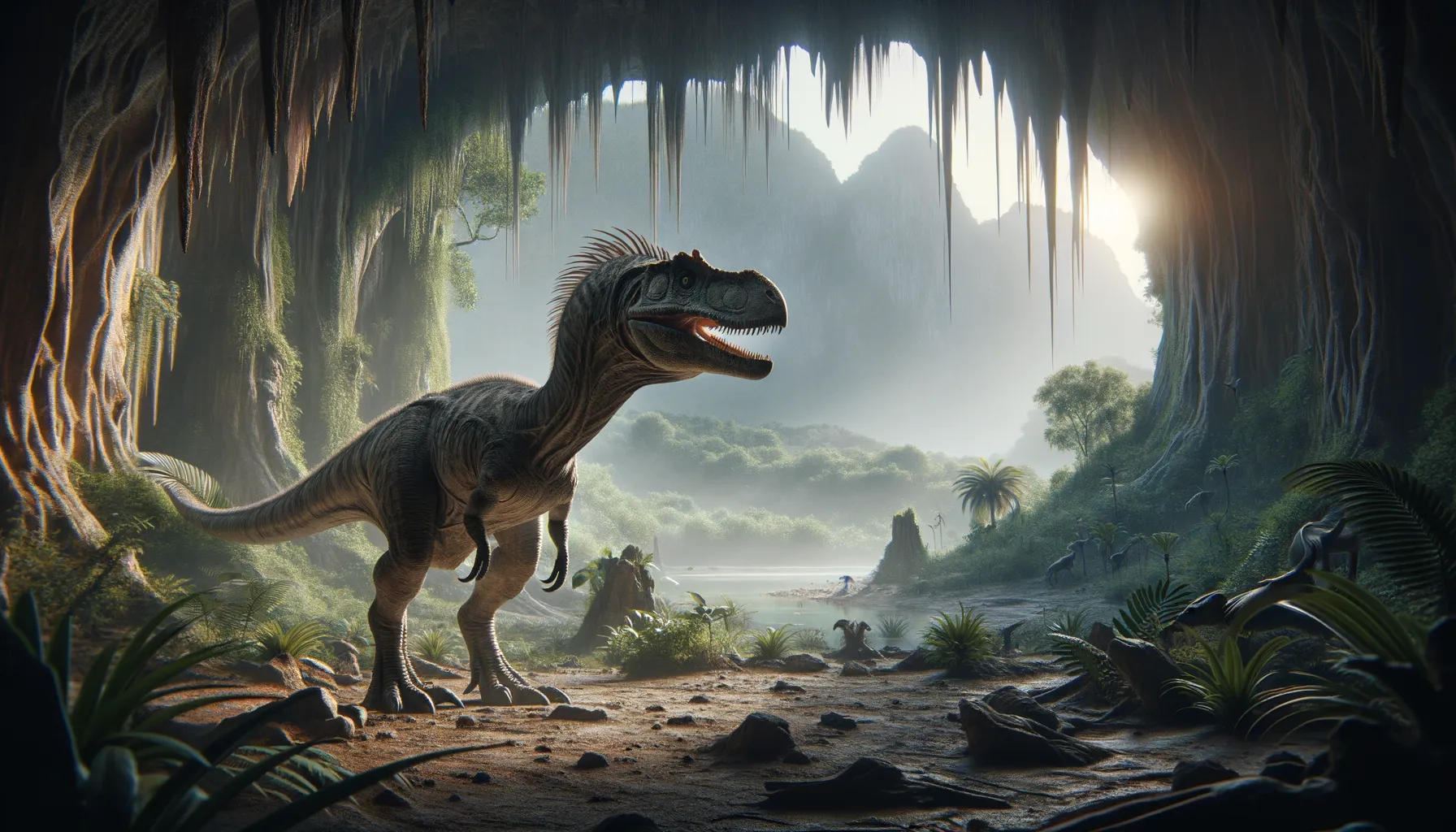
Urbacodon
Swift survivor of the Cretaceous era!
Period
Cretaceous
Length
About 2.5 meters in length.
Height
Around 1 meter tall at the hip.
Weight
Approximately 25 kilograms.
Urbacodon was a small, agile dinosaur that lived during the Late Cretaceous period. Its keen senses and lightweight build allowed it to adapt well to its environment, making it a successful survivor. Known for its unique dental structure, it provides key insights into the diversity and evolution of theropods. The fossil remains have been pivotal in understanding the ecosystems of its time.
Diet
Urbacodon was likely omnivorous, feeding on small plants and insects. Its teeth suggest it had a varied diet, possibly scavenging from time to time.
Hunting
As an omnivore, Urbacodon probably did not hunt large prey. Instead, it foraged for plants, insects, and possibly small vertebrates in its surroundings.
Environmental challenges
Urbacodon faced environmental challenges from climate change and natural disasters like volcanic activity. Predation from larger carnivorous dinosaurs posed constant threats. It also had to compete with other small dinosaurs for food resources.
Speed
Moderate given its size.
Lifespan
Estimated to be around 20 to 30 years.
First discovery
Discovered in Uzbekistan in 2004.
Fun Facts
- Urbacodon was a small dinosaur that lived during the Late Cretaceous period, around 95 million years ago.
- The name 'Urbacodon' means 'URBAC tooth,' named after the URBAC Paleontological Expedition that discovered it.
- Urbacodon is considered to be an early member of the troodontid family, which were bird-like theropod dinosaurs known for their intelligence.
- This dinosaur was discovered in the Kyzylkum Desert of Uzbekistan, highlighting its Asian origins.
- Urbacodon is known primarily from its teeth, which provide valuable insights into its diet and lifestyle.
- Unlike many larger dinosaurs, Urbacodon's remains suggest it was likely a nimble, fast-moving predator.
- Scientists believe Urbacodon's good vision and keen senses helped it to be an effective hunter in its environment.
Growth and Development
Urbacodon grew relatively quickly, reaching maturity within a few years. Juveniles likely stayed close to protective areas to avoid predators. Their growth involved a distinct transition from rapid juvenile development to slower adult growth.
Habitat
Urbacodon lived in a diverse habitat with lush vegetation and water sources. This environment supported a variety of other dinosaur species, providing ample opportunities for feeding and evading predators. The varying terrain, including floodplains and forests, offered multiple ecological niches.
Interaction with other species
Interactions with other species were common, from competing with other small omnivores to avoiding larger predators. It may have participated in symbiotic relationships, possibly aiding in seed dispersion through its diet. Small plant-eating mammals and reptiles may have also competed with or shared resources with Urbacodon.
Natural lifespan
Its natural lifespan could reach up to 30 years under optimal conditions.
Reproduction
Reproduction in Urbacodon likely involved laying eggs, similar to other theropods. Nesting behavior might have included simple ground nests or small protected areas. Parental care is possible, as observed in some other small dinosaurs.
Social behaviour
Urbacodon might have displayed some level of social behavior, possibly forming small groups for protection. Communication could have involved visual displays or vocalizations, especially during mating season. Solitary behavior was likely common during foraging.
Fossil locations
Urbacodon's fossils have been primarily found in Uzbekistan. These sites have provided crucial information on its morphology and ecological adaptations. Further discoveries in nearby regions could expand our understanding of its distribution.
